Why is everyone talking about psilocybin?
(And how the heck do you even pronounce that?)
Recently, Emily and I were interviewed briefly on the news in our home state of Rhode Island, and the topic was not exotic gourmet flavors, but psilocybin. Lawmakers in our State have proposed decriminalizing magic mushrooms; psilocybin (“sill-a-SY-bin”) is the hallucinogenic chemical found in these “shrooms”, which has been found to have important medical uses. The subject of this newsletter is not an excellent topic for kids; and we certainly don’t encourage the use of an illegal substance, even for adults. Psilocybin is a very important topic, though, and we are in a position to educate people. Just as with many other topics in mycology, there is a whole lot of unfounded fear, based on a lack of information. And as always, there’s a whole lot of misinformation out there too.
Some people think all this talk of hallucinations sounds rather scary; others think it sounds like tons of fun. But that’s all beside the point right now. It may be surprising to hear this, but research by Johns Hopkins Institute (and others) has now proven conclusively that the internal mental experience of “tripping” on psychedelic mushrooms, which takes several hours, can bring significant progress and healing to people suffering from PTSD, alcoholism, depression, and other conditions. Another breakthrough is for the person facing a terminal illness; the terrible fear and hopelessness they suffer through can actually be alleviated, significantly, through just one psilocybin therapy session.
Psilocybin (again, it’s “sill-a-SY-bin”) is found in a good number of mushroom species, most of which belong to the genus Psilocybe. That’s pronounced “sill-LAH-sa-bee”…note that in this word, a different syllable is loudest. The most famous species is Psilocybe cubensis. There are plenty of others, though. The mushrooms are dried and eaten; in the body, psilocybin is converted to psilocin (this related chemical is pronounced “sill-LOH-sin”…again, note the syllable emphasis; that’s three vocab words starting with psil-, so you’ll have to pay attention). Before being ingested, some magic mushroom species actually contain significant amounts of psilocin already, in addition to the precursor, psilocybin.
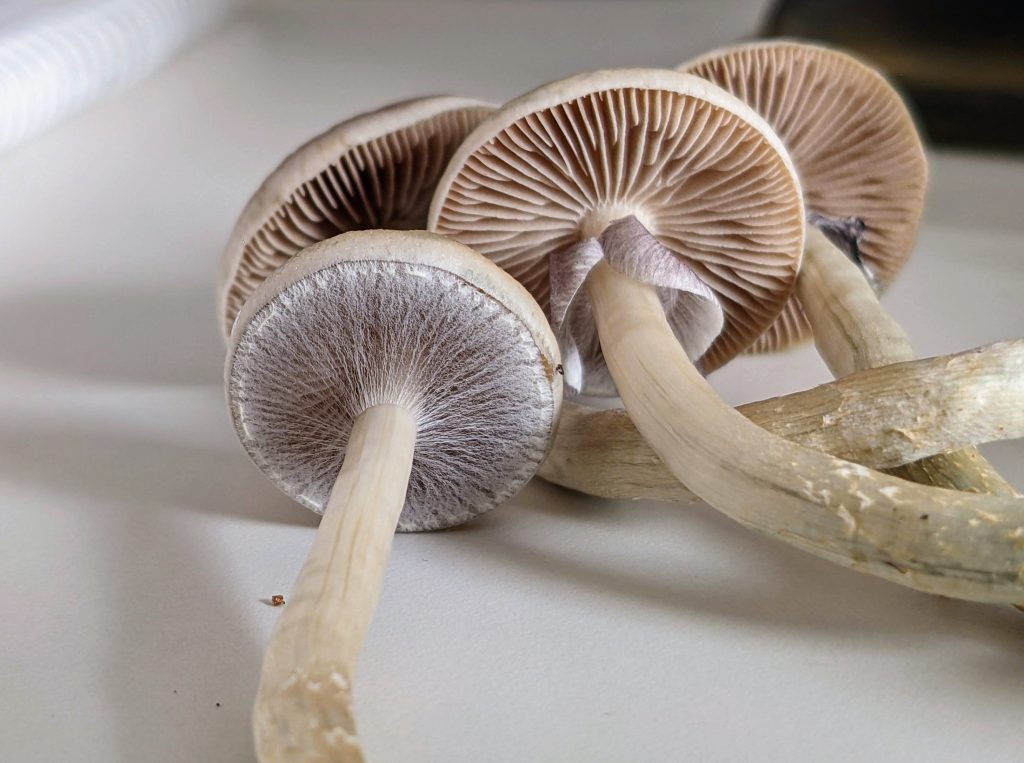
The effects vary depending on the dosage, but they include visual and auditory disturbances, which in general are easily recognized as being merely the effects of the drug. Elation, euphoria, and laughter are common, while at other times the person ends up working through the most difficult topics and emotions. However, in either case, the end result is quite often a profound and joyous sense of revitalization.
A typical example: the person who has decided to take up an old hobby they used to absolutely love; they have reconnected to their old sense of fun and creativity, and they’re going to enjoy their precious time off a whole lot more from now on! Another common example: the person who has confronted the reality of life and death, and in conclusion, has decided they are simply done smoking cigarettes, forever; it just doesn’t fit with how much they care about their loved ones, and they’ve also concluded that they deserve to love themselves better. I’ve heard many other examples. The experiences tend to have a lot in common.
Another upsetting but especially important topic: for terminally ill patients, psilocybin has been shown to bring inexpressible relief from the anxieties of actually facing one’s own death. This gets into some heavy psychological or even religious/spiritual territory, and I don’t want to get too far off our topic; but basically, it has helped people facing the end of life to find acceptance, peace, and even happiness amidst their circumstances.
People in general, too—healthy people—report most often that hallucinogenic mushroom trips are positive experiences of self-evaluation and personal growth, leaving them feeling very grateful to be who they are. But it’s still illegal for now. What are the actual concerns about this drug?
For one thing, it’s intoxicating; and just like with alcohol or anything else that’s intoxicating, a person who has taken psilocybin should avoid operating a vehicle or other heavy machinery until the effects wear off. For another thing—again, just like with anything else that’s intoxicating—common sense dictates that consuming psilocybin all the time is sure to decrease one’s level of enlightenment.
And yet, from a single experience with psilocybin, many people have reported overwhelmingly positive changes in overall mood, outlook, and mental health; often, there is a sense of permanent recovery.
It depends on the dosage, but in general, the effects of psilocybin are more powerful than those of marijuana. Still, the general opinion among drug users is that “shrooms” is one of the “soft drugs” or “hippie drugs”. It is not physically addictive at all; it causes no withdrawal symptoms; and a death by psilocybin overdose has still never been reported! Yet, somehow, legally it is listed as a Schedule I drug, among the likes of heroin, cocaine, methamphetamine, and fentanyl. This is what lawmakers in Rhode Island, and elsewhere, are trying to change. Some other states have already succeeded in decriminalizing magic mushrooms.
Katie Benoit of Rhode Island’s WJAR Channel 10 News had a few questions for us. The main one they included in the news segment was this: Does that kind of mushroom grow around here, in the wild?
We can honestly say yes, they do. And don’t worry—you can’t get high from touching them, just as you can’t get poisoned from touching a poisonous species. But we can also honestly say that the magic mushrooms fall solidly into the “experts only” category. It’s because of their resemblance to other species, truly dangerous species—especially the Deadly Galerina, and the Deadly Conocybe. A careless mushroom hunter going after an expert-level species could make a tragic mistake! This can happen with expert-level culinary mushrooms, too. We teach our beginner students to forget about the Parasols and other delicious-but-difficult ones, at least for the time being, and focus instead on learning species such as Black Trumpets, which are simple to identify correctly…and super delicious. That’s how you get safely into the hobby of mushroom hunting.
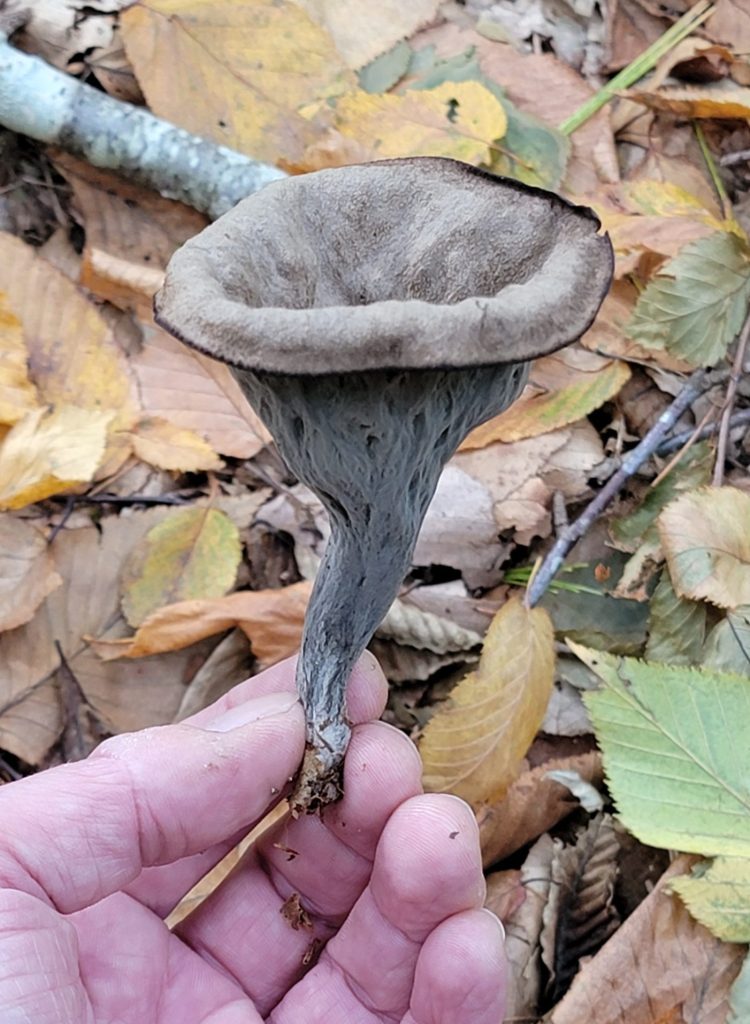
For now, in most areas of the country, a person can only obtain psilocybin legally through a therapist who is licensed to administer it during a trial study. If interested, look up the Johns Hopkins University Center for Psychedelics and Consciousness, and see if you can participate in a study that’s going on in the state where you live.
However, you don’t have to eat magic mushrooms to get a kick out of them. It can be a real “trip” just to come across a hallucinogenic mushroom. Just like with deadly ones, psychedelic shrooms are fun to discuss, especially when you see one “in person”. It always makes for a good laugh when we find them during one of our outdoor classes: “Well guys, it looks like we’ve come across Jimi Hendrix’s favorite species.” It’s a fairly astonishing thing, to see a magic mushroom just growing there, by the side of the trail.
I feel I must point out that there is a lot of ignorance involving the species Amanita muscaria. I have a feeling this will become a problem eventually, because as more people talk about magic mushrooms, more people will mistakenly call Amanita muscaria one of them. I will attempt to clarify. That exact species is commonly found on the West Coast, but there’s an East Coast variety too. A. muscaria does not contain psilocybin. It is intoxicating, and it is used in rituals by some indigenous tribes, particularly in Asia; but the drug it contains is not classified as a psychedelic, but as a deliriant. So Amanita muscaria is NOT a “magic mushroom”, even though some shops in Florida are apparently selling it as such.
We see Amanita muscaria variety guessowii all the time here in New England; it even grows in my neighbor’s yard! But I have never eaten it, and I don’t think you should either. Consider this: that advice is coming from a guy who has tried over 250 edible mushroom species, and listens to a lot of Pink Floyd, too! Amanita muscaria is not “shrooms”. From what I’ve read, it sounds like the effects are less like LSD, and more like PCP! I have no interest in passing out and/or accidentally breaking things with unexpected strength. In fact I don’t even want to include a photo of Amanita muscaria in this article. I recommend against eating it, in general, for several reasons: (1) The experience itself is highly unpredictable. (2) Apart from the intoxicating component, it can also contain muscimol, a serious toxin, in highly varying amounts when collected in different regions. (3) Some other kinds of Amanita—similar-looking relatives from the very same genus as Amanita muscaria—are deadly. (4) All of this distracts from the discoveries about the therapeutic potential of psilocybin. It’s a new field of research. As you read about the topic from varying sources, I recommend being skeptical, watching out for mistaken (or even completely fake) news reporting.
The news report we took part in was accurate. But here’s a story I hesitated to share with the news reporter., about one particular gilled mushroom Emily and I found.
It was a couple years before the pandemic. On a beautiful day up in eastern Massachusetts, I was driving along with Emily, and glancing out the side window. I took in the colorful foliage, some yards, somebody’s bird bath that had tipped over and shattered, another yard…and suddenly I slowed down and pulled over. What had I seen? My brain processed sights and memories for a second. What I saw…wasn’t what I saw. It hadn’t been a bird bath at all.
“That’s not a bird bath. It’s a gilled mushroom.”
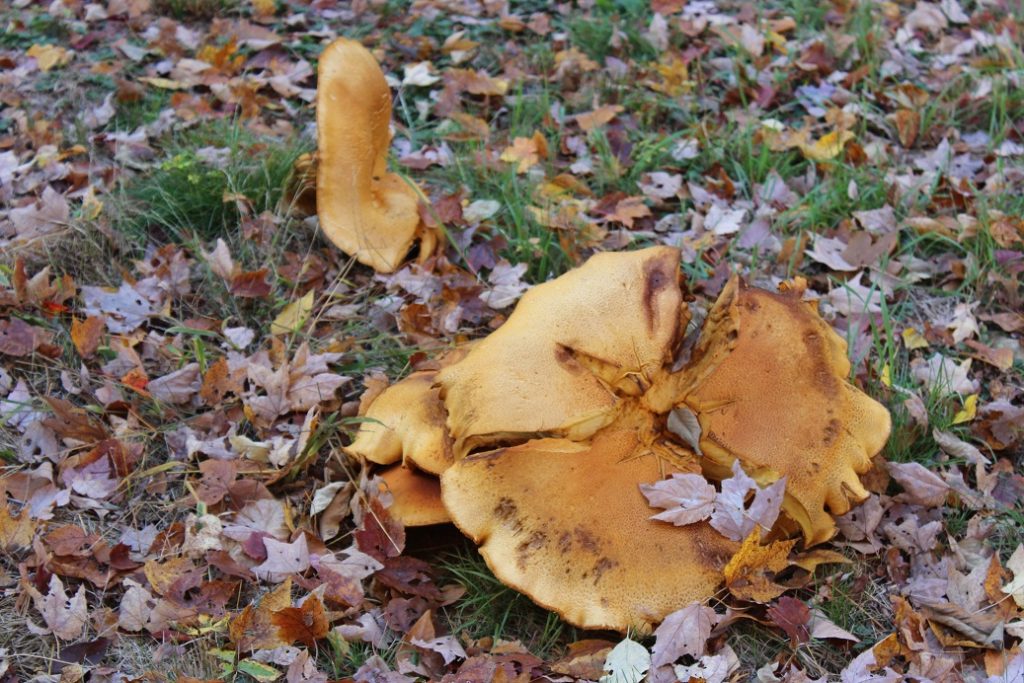
It was so huge that its own weight had toppled it over, splitting the cap a bit. But what had looked like shards of broken clay were other mushrooms growing beside the big one. I picked it up, and a big piece of the cap broke off. It was somewhat of a cluster, too, with smaller ones attached at the base of the humongous one. We passed it back and forth, laughing at what a giant it was. “Biggest gilled mushroom we’ve ever found?” I asked Emily. “Definitely!” she replied. “We should weigh it.”

We got the scale, and weighed it…and just the big one by itself weighed in at 7.5 pounds. Holy moly!
“But…but you don’t suppose this is… Nooooo, it can’t be…” But it was. We had determined it was a hallucinogenic species. Holy $#*%!
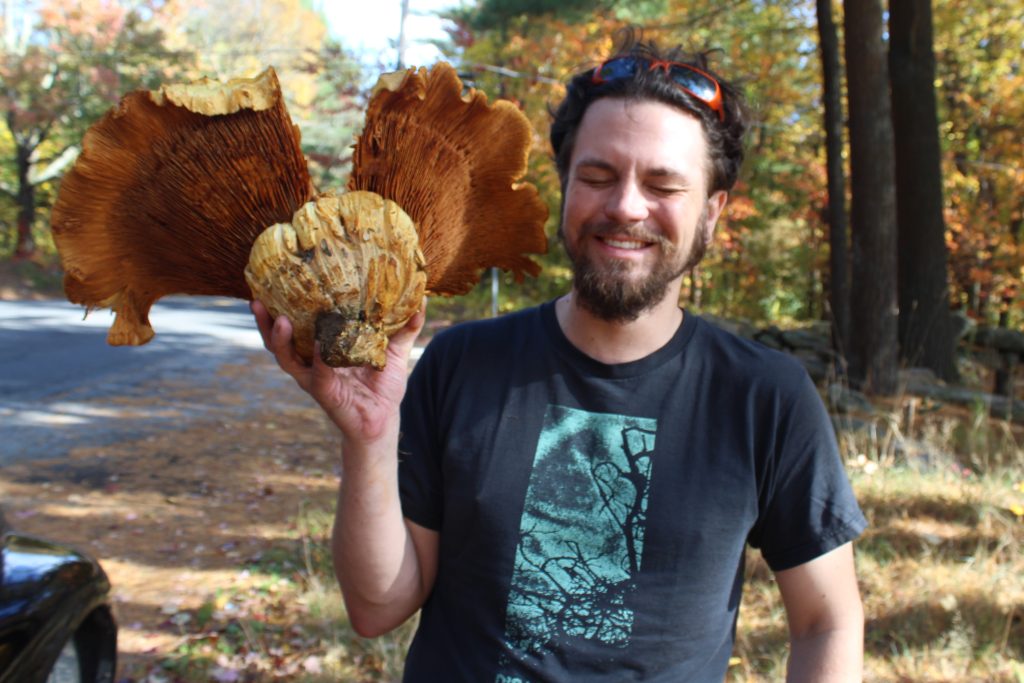
It was not very fresh, though, so the psilocybin had likely broken down already; it was no longer psychoactive. So even if we’d been on our way to Woodstock, this “shroom” would not have been tempting.
So, yes, magic mushrooms can sometimes be found out there in the world. But remember, they are still illegal to possess. I would not have enjoyed trying to explain to a cop that the psilocybin wasn’t “active” anymore. I assume that a seven and a half pound magic mushroom could get a person some jail time…but I would hope for leniency, considering that we literally found it on the side of the road. A little baggie of dried ones, ready to eat, would be a lot more problematic.
If you take mushroom classes with us, and take your time learning from careful study, foreseeably you could get good enough at it to identify your own. But for now, the only way to get psilocybin legally is to have it administered by a licensed therapist, as part of a legitimate trial study. If interested, I would recommend looking up Johns Hopkins Center for Psychedelics and Consciousness Research, and see about participating in a psilocybin therapy study that’s going on in the state where you live.
Anyone having trouble remembering how to pronounce psilocybin? Just listen to the rock song that has this lyric:
“I’ve been lying on your feathers / You keep talkin’ ‘bout the weather I’m a psilocybin pony / You’re a flip fandango phony.” —from “In Touch with Your World” (Ric Ocasek), performed by The Cars. Loaded with Greg Hawkes’ oddball sound effects, this is easily the strangest song on their classic debut album from 1978.
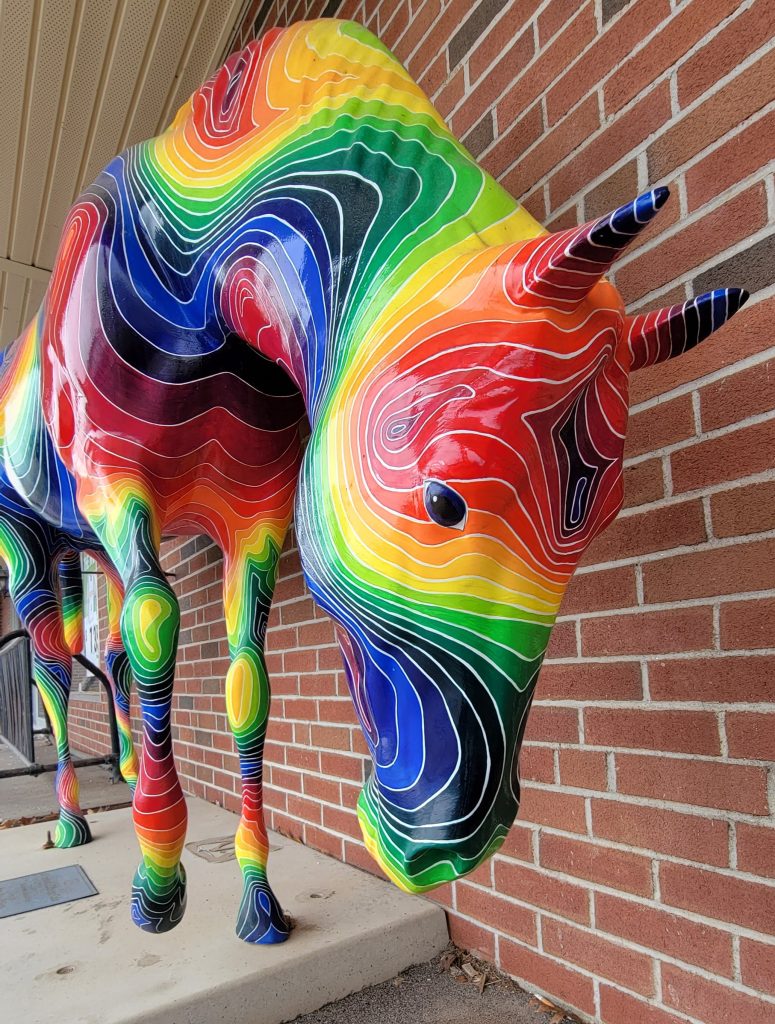
We found this “psilocybin pony” outside a convenient store in the Berkshires in western Mass. Actually it might be an LGBTQ+ pony! Either way, I believe the actual title of this cool artwork was A Horse of a Different Color.
